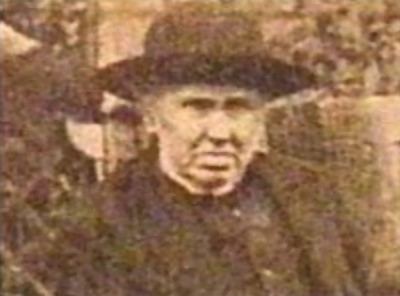Name Benjamin Fawcett | ||
 | ||
Observations on the Nature, Causes & Cure of Melancholy - Benjamin Fawcett Christian Audio Book 3/3
Benjamin Fawcett (December 1808, in Bridlington – January 1893) was one of the finest of English nineteenth century woodblock colour printers. The son of a ship's master, he was apprenticed at age 14 for seven years to William Forth, a Bridlington bookseller and printer. In 1831 he started his own business in Middle Street, Driffield, as music seller, bookbinder and printer, bookseller and stationer. He married Mary Ann Woodmansey in 1830, with whom he had two sons before her death in 1834. He was married again in 1848, to Martha Porter, and raised a large family of four daughters and six sons.
Contents
- Observations on the Nature Causes Cure of Melancholy Benjamin Fawcett Christian Audio Book 33
- Selected books printed by Fawcett
- References
His early works were mostly children's books published by Webb & Millington of Leeds. In about 1845 he formed a close working association with Francis Orpen Morris. This relationship would last nearly 50 years and have a profound effect on British ornithology. Morris wrote the text for books which were financed and printed by Fawcett, and were engraved by Alexander Francis Lydon (1836-1917), who had started his career as Fawcett's apprentice. Colour printing was a major change from the much-admired monochrome work of Thomas Bewick (1753-1828). At first wood-engraving illustrations were coloured by hand, but later a system of colouring from multiple wood blocks was used.
Hand-coloured wood engraving started with an accurate painting of the subject. This picture was then carved on a wooden block, standing proud in order to pick up the ink. The block was then placed in a printing press to give a black-and-white print, which was then hand-coloured. The wooden print blocks were carved with great attention detail. Pear and boxwood were sufficiently hard and fine-grained, making them durable and capable of showing fine detail. Most of the joint works of Fawcett and Lydon were published by Groombridge, of London.
Fellow engraver, W.D. Ridley wrote: "Benjamin Fawcett was undoubtedly a born genius in the best sense of the word; for in a remote country town in the early days of railway facilities, when it must have been difficult to buy high-grade colour inks, he brushed all difficulties aside, purchased his own boxwood shipped direct from Turkey, matured it, sawed it in slices, surfaced it accurately, drew the whole of his work, Morris's British Birds, upon these blocks himself, and with the aid of his clever wife, actually produced the first edition so far as the blocks were concerned, ...."
"If there was a secret which produced the fine results it would have been... Benjamin Fawcett engraving every one of the three hundred and sixty plates for this work on wood with his own hand ... making the inks himself from the costliest powders and the most expensive varnishes procurable....and each specimen plate for the colourers painted by his wife. This, I believe, is an achievement without parallel in book production. The very best materials were used."
Benjamin Fawcett died in January 1893, a few weeks before Francis Orpen Morris.
Selected books printed by Fawcett
First Edition xxvi, 202pp (380 x 290 mm), Illustrated with 41 full page colour plates as well as vignette head pieces, brick-red cloth, with piscatorial emblems. 41 tissue-guarded colour-printed xylograph plates by Benjamin Fawcett of Driffield after A.F.Lydon, and another 64 woodcuts by Lydon.
